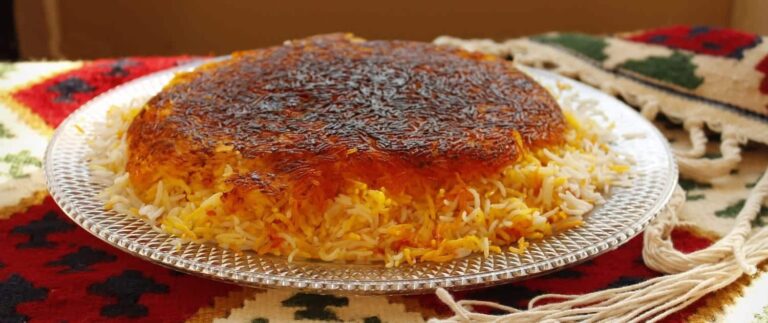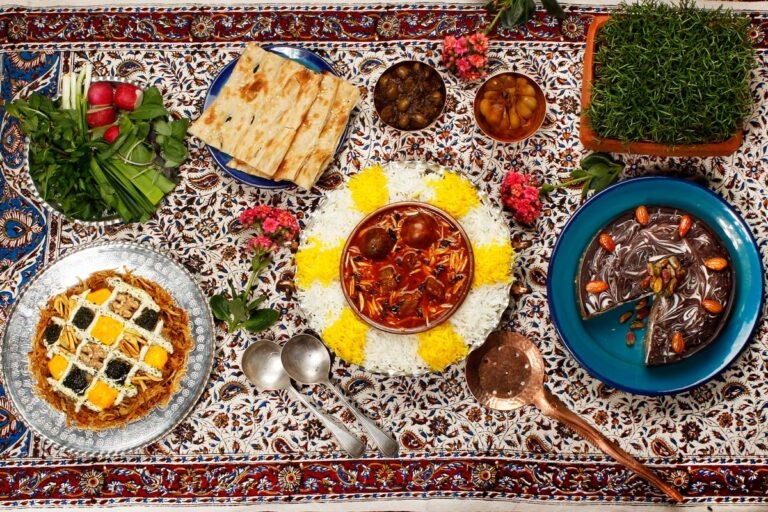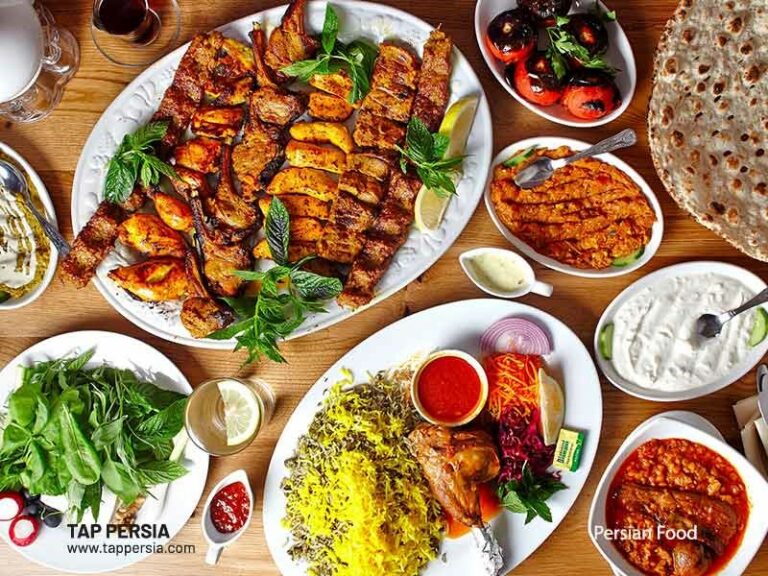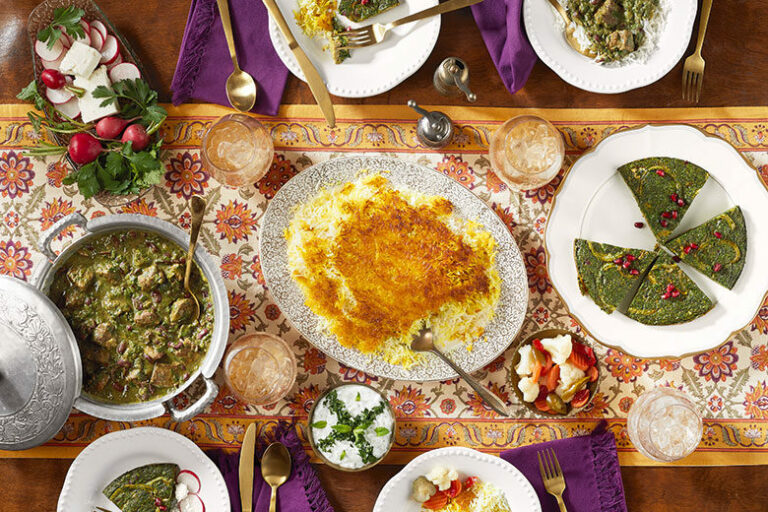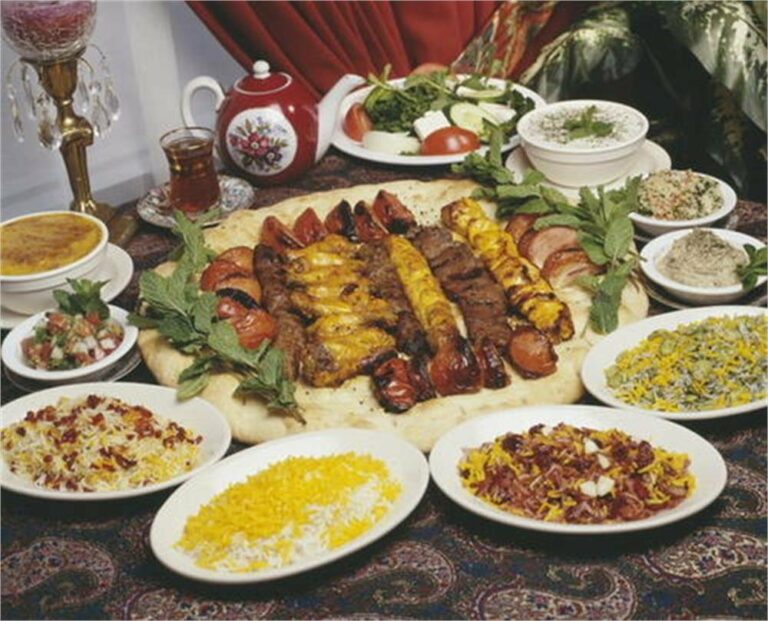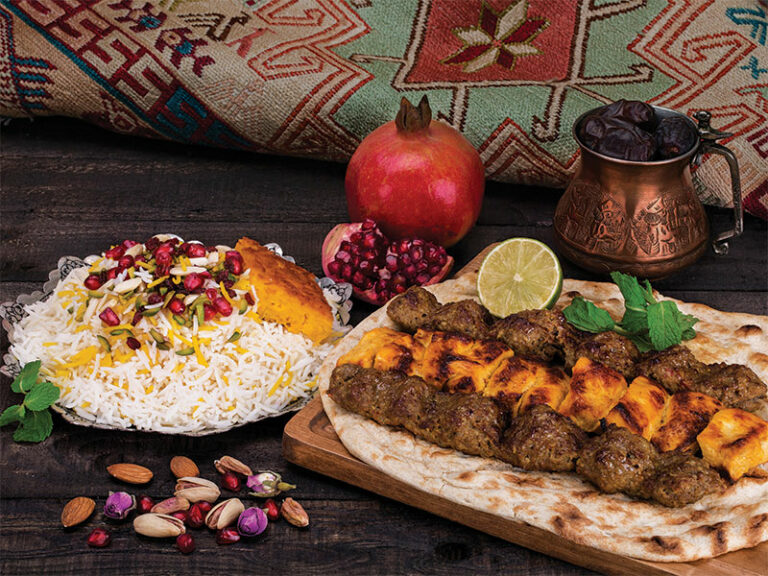Introduction to Iranian Cuisine
Iranian cuisine is one of the most diverse and flavorful cuisines in the world, with a rich history dating back thousands of years. Iranian cuisine is known for its use of aromatic herbs and spices, complex and rich flavors, and a variety of textures. Traditional Iranian cuisine is a perfect example of how a country’s geography, history, and culture can shape its culinary traditions.
Through the centuries, Iranian cuisine has been influenced by different cultures and civilizations, including the Greeks, Arabs, Turks, and Mongols. With the rise of the Persian Empire, Iranian cuisine became more sophisticated, and culinary traditions were developed in different regions of the country. Today, Iranian cuisine is a blend of ancient and modern cooking techniques, with a wide range of dishes that cater to different tastes and preferences.
Main Ingredients and Flavors
The main ingredients in Iranian cuisine are rice, meat, vegetables, and herbs. Iranians use a unique blend of spices, such as saffron, turmeric, cumin, cinnamon, and cardamom, to add flavor and aroma to their dishes. Iranians also use a variety of herbs such as parsley, mint, dill, and coriander to add freshness to their dishes.
One of the most popular dishes in Iranian cuisine is Kabob, which is usually made with lamb or beef and marinated in a mixture of spices and herbs. Iranian cuisine also features stews, such as Ghormeh Sabzi, which is made with herbs, vegetables, and meat, and Fesenjan, which is made with ground walnuts and pomegranate paste. Iranians also enjoy a variety of rice dishes, such as Polo, which is made with saffron and different ingredients such as chicken, lamb, or vegetables.
Regional Diversity and Influences
Iran is a large and diverse country, and regional cuisine reflects the unique geography, climate, and cultural traditions of each region. For example, the cuisine of the northern provinces of Iran is heavily influenced by the Caspian Sea, and features seafood dishes and rice prepared with herbs and spices. The cuisine of the southern provinces, on the other hand, is influenced by the Persian Gulf, and features spicy and tangy flavors.
Iranian cuisine has also been influenced by neighboring countries such as Turkey, Iraq, and Afghanistan, as well as by the ancient Silk Road trade routes. As a result, Iranian cuisine features a variety of dishes with different flavors and ingredients, from savory kebabs to sweet desserts.
Popular Dishes and Special Occasions
Iranian cuisine is rich in traditional dishes and specialties that are enjoyed during special occasions or family gatherings. One such dish is the Persian New Year’s dish, called Sabzi Polo Mahi, which is made with herbed rice and fish. Another special occasion dish is the Ash-e Reshteh, which is a vegetarian soup made with noodles, beans, and herbs. Iranians also enjoy sweets such as Sohan, which is saffron brittle, and Halva, which is a sweet dessert made with sesame seeds.
Traditional Cooking Methods and Utensils
Iranian cuisine has a long history, and traditional cooking methods and utensils are still used today. For example, Iranians use a clay oven called a Tandoor to bake bread and prepare some meat dishes. Iranians also use a special pot called a Beryani, which is used to cook rice and other stews. Traditional utensils such as copper pots and pans, wooden spoons, and mortar and pestle are still used in many Iranian kitchens.
Conclusion: Iranian Cuisine’s Global Appeal
Iranian cuisine is gaining popularity around the world, thanks to its unique flavors, diverse ingredients, and rich history. Iranian cuisine is a perfect example of how a country’s geography, history, and culture can shape its culinary traditions. Today, Iranian restaurants can be found in many major cities around the world, providing a taste of Iran’s rich culinary heritage and cultural traditions.

